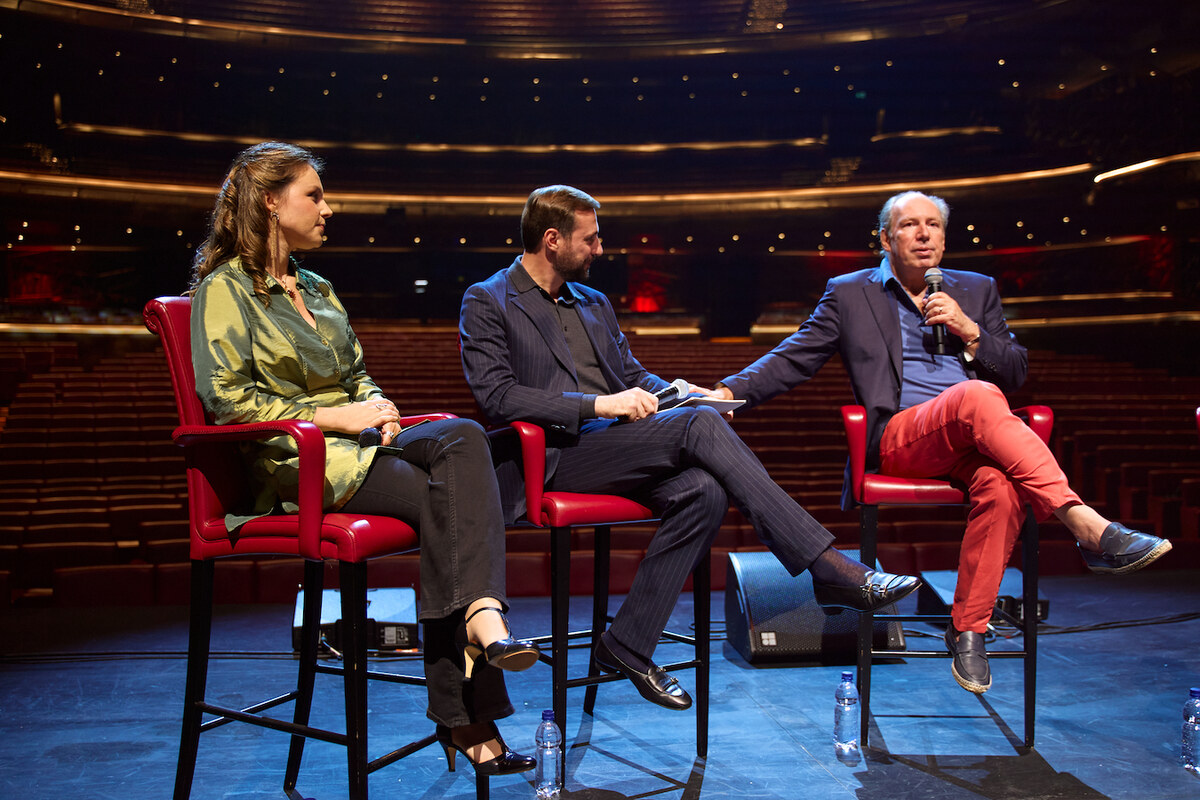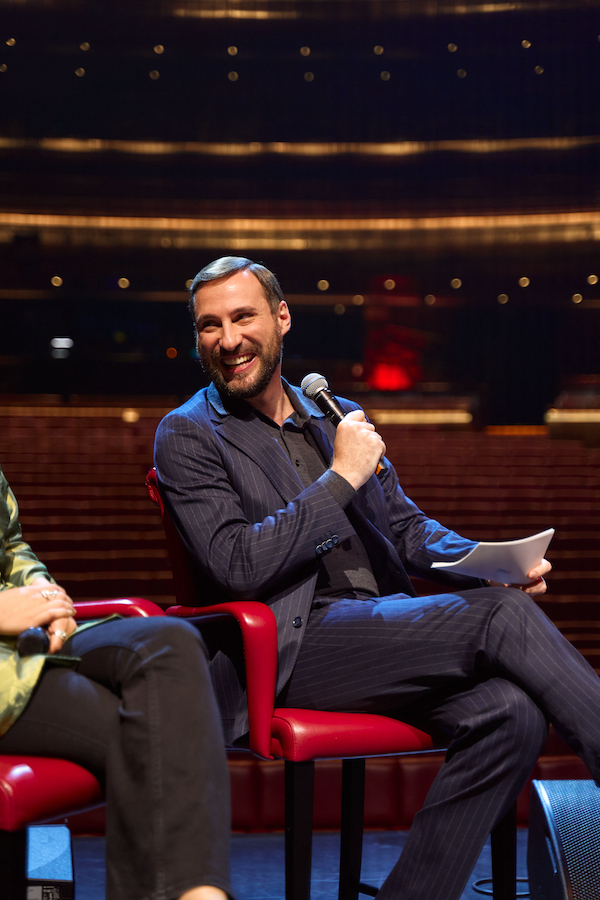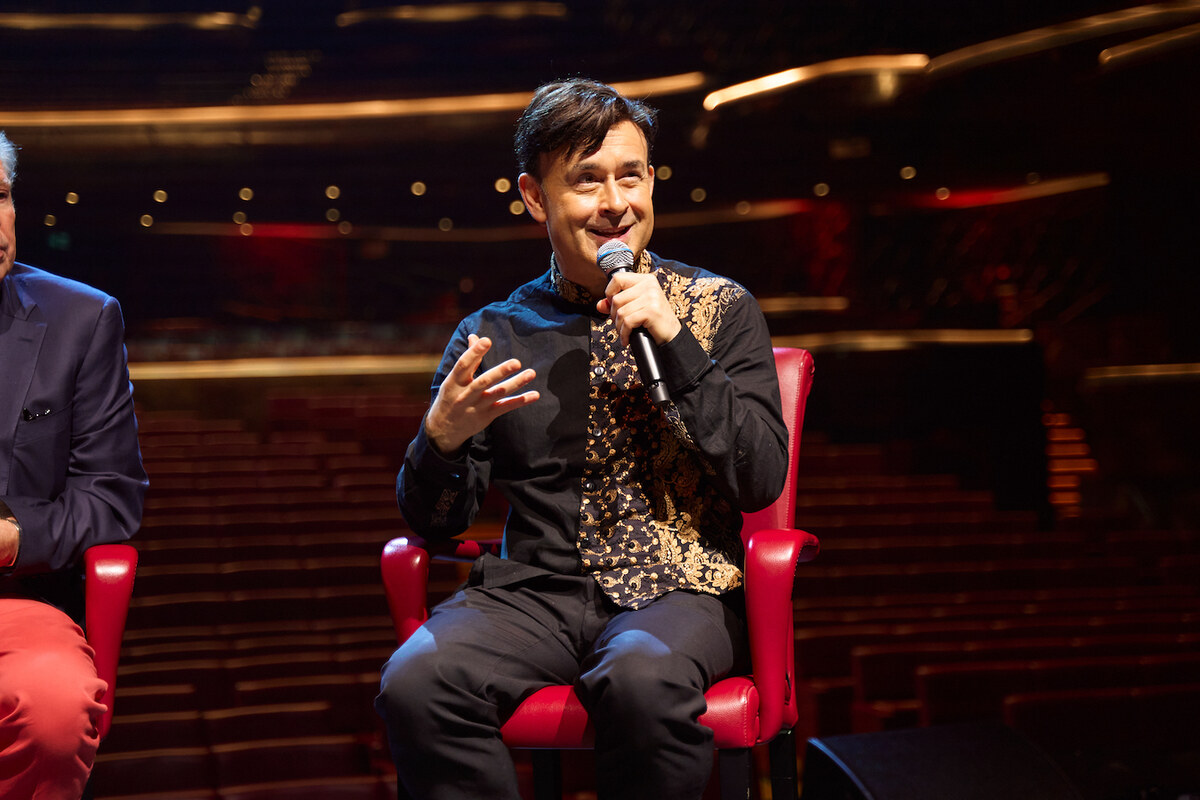RIYADH: Saudi artist Rashid Al-Shashai inaugurated his solo art exhibition to coincide with the official launch of Shashai Studio during the blooming March art season.
Situated in the heart of the JAX art district in Diriyah, the “Night and a Thousand Nights” exhibition is a collage of feelings, emotions and life stories inspired by the period preceding the birth of Saudi Arabia’s Vision 2030.
Each of the six pieces in the exhibition is laden with remnants of the past, as the artist utilizes existing materials, content and tools such as old wood, doors, windows, rugs and popular household items from the pre-vision era.
“After I produced it, I felt that I took contemporary tools and created something traditional. In one way or another, I wanted to resemble the drawings of ‘One Thousand and One Nights’,” Al-Shashai told Arab News. “The works are very abstract but I made sure that they were clear enough to build the rest of the series on.”
He added that the collection of Middle Eastern folktales, compiled in Arabic during the Islamic Golden Age, is one of the most prominent narratives that has impacted cultures across the globe.
He said: “Once upon a time, we gave the world this kind of culture. It has been a long time that we’ve been importing, so now we want to restore this period of our lives in light of ‘One Thousand and One Nights.’ It will be very exciting and important to reestablish that, so we can export this type of culture again.”
The pieces explore themes related to the Kingdom’s history, reshaping what Saudis deem as collective memory and cultural identity amid contemporary changes.
Visitors, art enthusiasts and even cats have huddled into the studio to immerse themselves in the visual documentations. The first few pieces display scenes of the Saudi state’s early stages, like imported goods on camelbacks, the Trans-Arabian Pipeline or Tapline now owned by Aramco, and the development of Saudi society amid surging wealth.
Al-Shashai said: “But now the Vision arrived, saying ‘thank you to the oil—now it’s time to target different resources for the future’.”
Other pieces speak on the conflicting realities between different societies and movements. One of the scenes, for example, shows a beaming red car commanded by a man and what appears to be his three wives. His demeanor asserts that he wears the pants in the family, but two of the women hold a pole to his neck, as if preventing him from marrying a fourth woman.
“Many of these issues have faded now with the vision,” Al-Shashai said.
Another piece contemplates the transformation of travel culture; while Saudis were notorious for their long summer and winter trips abroad, escaping the regional heat and filling their plates up with various forms of entertainment, the Kingdom is fast becoming a top global holiday destination.
Next to that, a wooden piece dressed in common household items like an incense burner and oil lamp tells the story of a homemaker who dreams of harboring a career outside the home. While the mother and wife’s role was an essential pillar to every household, the Saudi woman is now also highlighted as a pillar of the country.
In ‘One Thousand and One Nights,’ Scheherazade tells part of the story in order to share more the next day. Much like the folktale, Saudi Arabia’s growing transformation is a story still in progress.
While the exhibition is a solo venture, more than 6o individuals, from artists to executors to designers, helped bring the narrative to life. Al-Shashai views the exhibition as the first step to a much larger project, where he hopes to have other artists contribute through works of their own.
Artistic supervisor and curator Omar Al-Arifi told Arab News that “Night and a Thousand Nights” is the result of a fruitful meeting with Al-Shashai and a discussion about Saudi society following the launch of Vision 2030.
He said: “We discovered that the current generation sees this change but does not comprehend or imagine the stories we tell and experienced, as if we narrate them from the fabric of imagination like the tales of ‘One Thousand and One Nights’.”
The show at Shashai Studio is expected to continue throughout the month of Ramadan until April, alongside a series of talks and sessions discussing topics and ideas put forth by the exhibition.


































